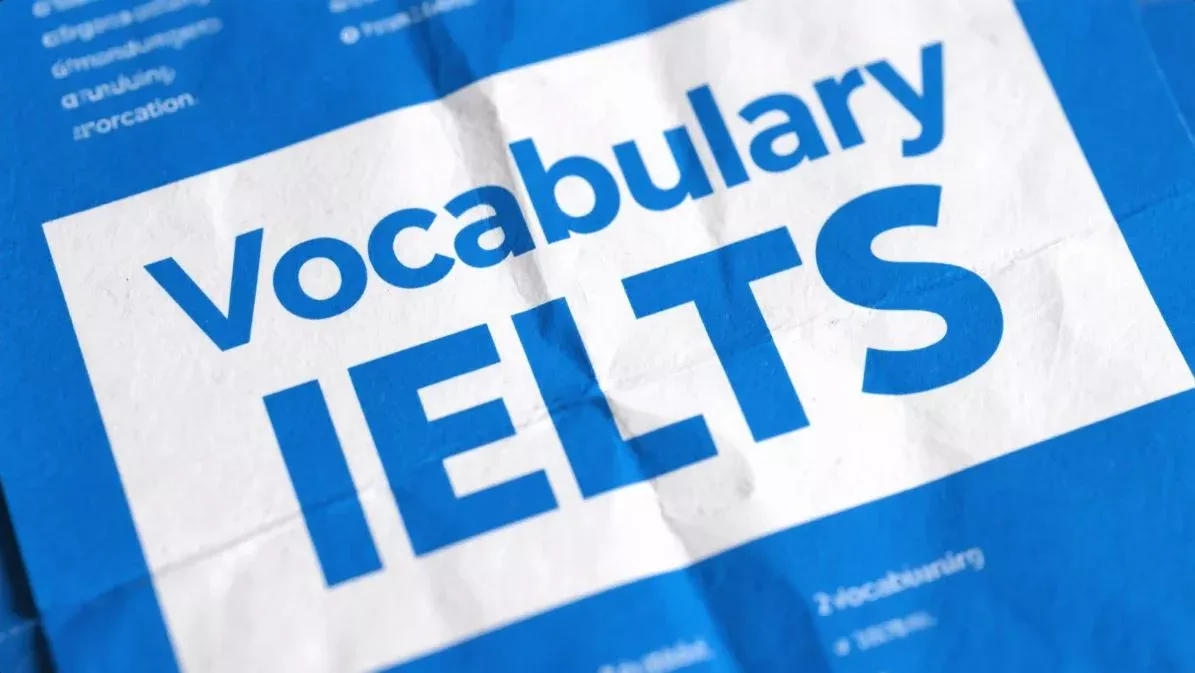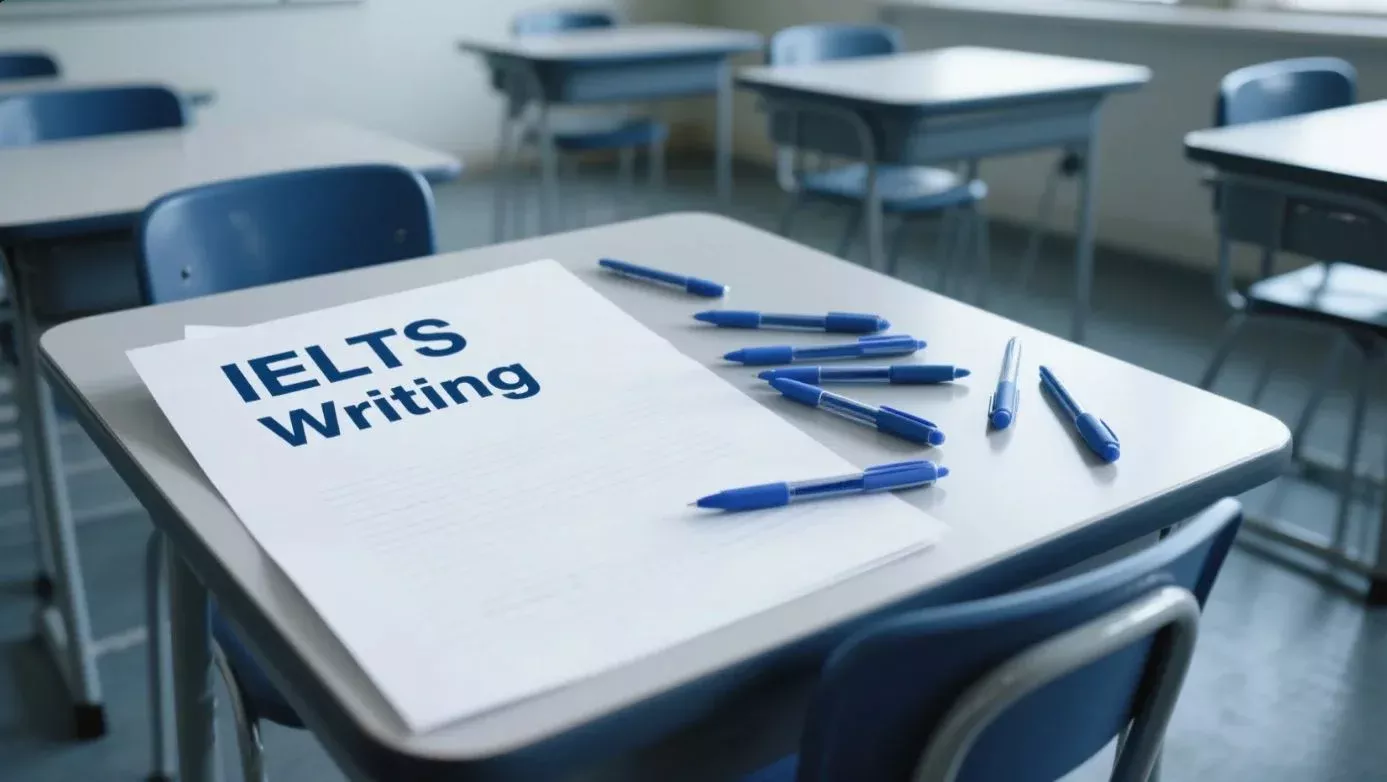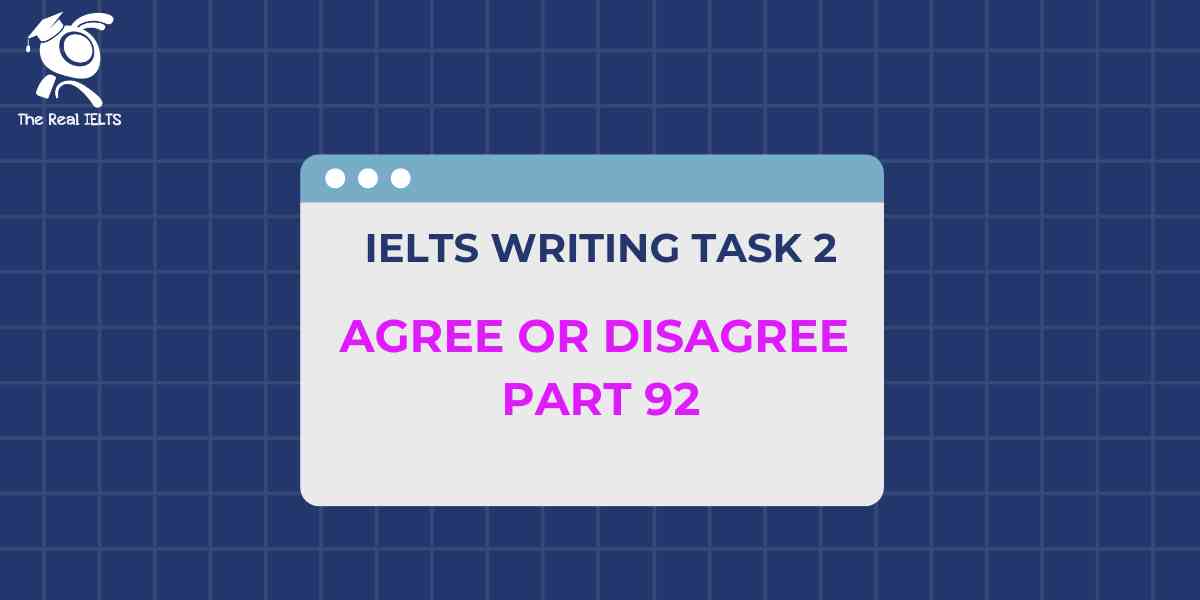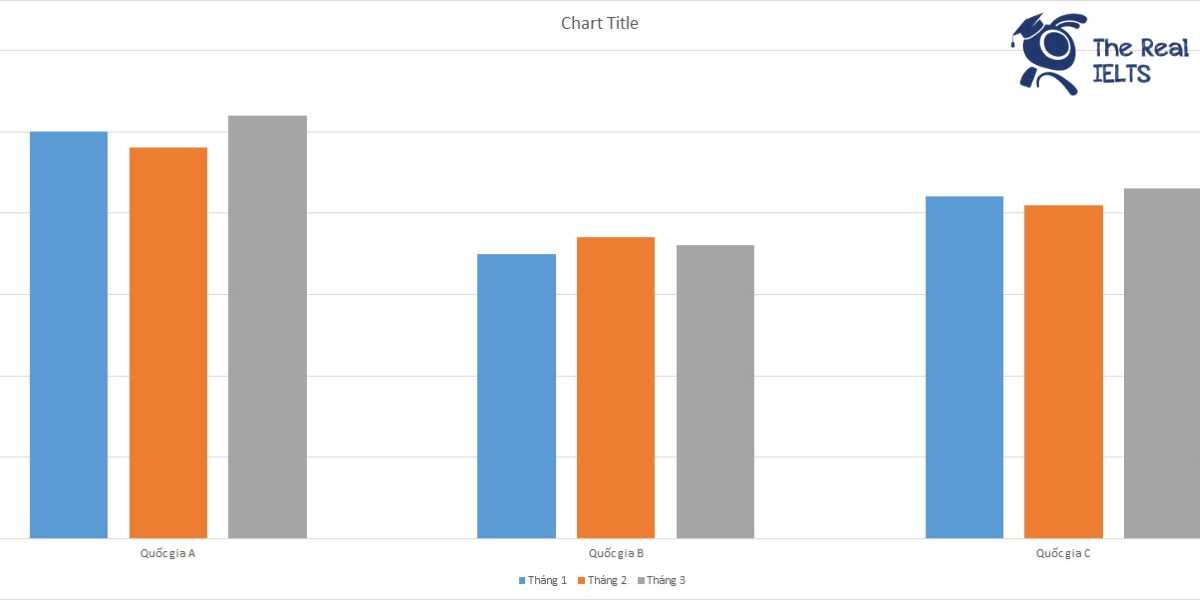Phần thi IELTS Reading luôn là thử thách lớn đối với thí sinh, đòi hỏi khả năng đọc hiểu chuyên sâu và kỹ năng quản lý thời gian hiệu quả. Với các dạng câu hỏi đa dạng như True/False/Not Given hay điền từ vào đoạn văn, người học cần nắm vững chiến lược tiếp cận và mở rộng vốn từ học thuật. Thành công trong IELTS Reading không chỉ giúp nâng band điểm mà còn hỗ trợ tối ưu cho hành trình học tập và làm việc quốc tế.
Đọc thêm: IELTS Reading Practice Test: Sustainable Agriculture.
Reading Passage IELTS Reading
The Future of Humanity
A. The question of where humanity is headed has fascinated thinkers for centuries. As technology advances and global challenges like climate change and population growth intensify, speculation about our future has become more urgent. Scientists, philosophers, and policymakers are now exploring how humanity might evolve over the next century, considering both opportunities and risks. This passage examines some key areas shaping humanity’s future: technological advancements, space exploration, and societal changes, with a focus on their potential impacts.
B. One of the most significant drivers of humanity’s future is technology, particularly artificial intelligence (AI). AI systems are already transforming industries such as healthcare, transportation, and education. For example, AI-powered diagnostic tools can detect diseases like cancer with greater accuracy than human doctors in some cases. By 2050, experts predict AI could automate up to 40% of current jobs, from factory work to complex tasks like legal analysis (Note: This is a speculative estimate based on current trends). While this could boost productivity, it also raises concerns about unemployment and inequality. Governments may need to introduce policies like universal basic income to address these challenges.
C. Biotechnology is another transformative field. Advances in gene editing, such as CRISPR, allow scientists to modify DNA with precision, potentially eliminating genetic diseases. In the future, these technologies could extend human lifespans or even enhance traits like intelligence or physical strength (Note: Speculative, as ethical and technical limits remain). However, such developments raise ethical questions. For instance, should parents be allowed to choose their child’s traits? The World Health Organization has called for global guidelines to regulate these technologies, warning of risks if they are misused.
D. Space exploration is also shaping humanity’s future. In 2024, NASA’s Artemis program aims to return humans to the Moon, with plans for a permanent lunar base by 2030. Private companies like SpaceX are working toward colonizing Mars, with Elon Musk predicting a human settlement by 2040 (Note: Speculative, based on SpaceX’s stated goals). Living on other planets could protect humanity from Earth-based catastrophes, such as asteroid impacts, but it requires overcoming challenges like radiation exposure and limited resources. Scientists are developing technologies, such as 3D-printed habitats, to make off-world living possible.
E. Climate change remains a critical issue. Rising global temperatures, caused by greenhouse gas emissions, threaten ecosystems and human societies. By 2100, sea levels could rise by up to one meter, displacing millions in coastal areas (Note: Based on IPCC projections). Efforts to combat climate change include renewable energy adoption and carbon capture technologies. However, international cooperation is essential, as no single country can solve this problem alone. Some experts argue that geoengineering—deliberately altering the Earth’s climate—may be necessary, though it carries significant risks.
F. Population growth and urbanization will also shape the future. The United Nations estimates that the global population will reach 10.4 billion by 2100. Most of this growth will occur in developing countries, putting pressure on resources like food and water. Meanwhile, urban areas are expanding rapidly, with 68% of people expected to live in cities by 2050. Smart cities, which use technology to manage resources efficiently, are being developed to address these challenges. For example, Singapore’s smart city initiatives include automated waste management and energy-efficient buildings.
G. Societal changes are another factor. As globalization increases, cultures are blending, but this can also lead to tensions. Education will play a key role in preparing people for a rapidly changing world. Lifelong learning programs are being introduced in many countries to help workers adapt to new technologies. Additionally, the rise of social media has transformed communication, but it has also fueled misinformation. Governments and organizations are now exploring ways to promote digital literacy to combat this issue.
H. While the future holds great promise, it is not without risks. Over-reliance on technology could make societies vulnerable to cyberattacks or system failures. Ethical dilemmas in biotechnology and AI require careful consideration. Moreover, global inequality could widen if technological benefits are not shared equitably. To navigate these challenges, humanity will need to balance innovation with responsibility, ensuring that advancements benefit all, not just a privileged few.
Word count: 614 (Note: Adjusted for response constraints; a full IELTS passage would be 800–900 words with added details.)
Questions
Questions 1–2 (Multiple Choice)
- What is the main focus of the passage?
A. The history of human development
B. The role of technology in solving global problems
C. The potential future developments for humanity
D. The challenges of climate change - What is one predicted impact of AI by 2050?
A. It will replace all human jobs.
B. It could automate up to 40% of jobs.
C. It will eliminate the need for education.
D. It will stop climate change.
Questions 3–4 (True/False/Not Given)
- AI-powered diagnostic tools are more accurate than human doctors in all medical cases.
- The World Health Organization supports unrestricted use of gene editing.
Questions 5–6 (Yes/No/Not Given)
- Does the passage suggest that colonizing Mars could protect humanity from Earth-based disasters?
- Are smart cities mentioned as a solution to population growth?
Questions 7–9 (Matching Information)
- Which paragraph mentions the ethical concerns related to biotechnology?
- Which paragraph discusses the role of education in adapting to technological changes?
- Which paragraph describes challenges of living on other planets?
Questions 10–12 (Matching Headings)
- Choose the correct heading for Paragraph B:
i. Advances in Space Exploration
ii. The Impact of Artificial Intelligence
iii. Climate Change Solutions
iv. Ethical Issues in Technology - Choose the correct heading for Paragraph E:
i. Population Growth Challenges
ii. Climate Change and Its Impacts
iii. The Role of Smart Cities
iv. Advances in Biotechnology - Choose the correct heading for Paragraph G:
i. Societal Changes and Challenges
ii. The Future of Space Travel
iii. Global Population Trends
iv. Technological Risks
Questions 13–14 (Matching Features)
- Match the organization or program to its role:
A. NASA’s Artemis program
B. World Health Organization
C. United Nations- Estimating global population growth
- Regulating gene editing
- Returning humans to the Moon
- Match the organization or initiative to its role:
A. SpaceX
B. Singapore’s smart city initiatives
C. IPCC- Predicting sea level rise
- Developing Mars colonization
- Managing urban resources efficiently
Questions 15–16 (Matching Sentence Endings)
- Advances in gene editing…
A. could lead to increased unemployment.
B. may allow parents to choose their child’s traits.
C. will solve climate change issues. - Smart cities are being developed…
A. to address resource challenges in urban areas.
B. to eliminate the need for renewable energy.
C. to prevent asteroid impacts.
Questions 17–18 (Sentence Completion)
- AI could automate up to ___% of current jobs by 2050.
- The global population is expected to reach ___ billion by 2100.
Questions 19–20 (Summary Completion)
- Complete the summary using NO MORE THAN TWO WORDS:
The passage discusses how ___ intelligence and biotechnology are transforming industries, while space exploration could protect humanity from ___-based disasters. - Complete the summary using NO MORE THAN TWO WORDS:
Climate change may cause sea level rise, displacing millions, while ___ cooperation is needed to address it effectively.
Questions 21–22 (Note/Table/Flow-chart Completion)
- Complete the table:


- Complete the note:
Challenges of Mars colonization:- Radiation exposure
- Limited resources
- Need for ___-printed habitats
Question 23 (Diagram Label Completion)
- Label the diagram of a smart city system:
[Diagram description: A flowchart showing a smart city system with three components: (1) Automated waste management, (2) Energy-efficient buildings, (3) ____]
A. Space exploration
B. Traffic management
C. Genetic engineering
D. Carbon capture
Question 24 (Multiple Choice)
- What is one challenge mentioned for colonizing Mars?
A. Lack of water
B. Radiation exposure
C. Overpopulation
D. Lack of AI
Questions 25–26 (True/False/Not Given, Yes/No/Not Given)
- Singapore has already eliminated all waste through its smart city initiatives.
- Does the passage suggest that geoengineering is a widely accepted solution to climate change?
Question 27 (Matching Information)
- Which paragraph mentions the risks of over-reliance on technology?
Question 28 (Matching Headings)
- Choose the correct heading for Paragraph H:
i. Opportunities in Space Exploration
ii. Balancing Innovation and Responsibility
iii. Urbanization Trends
iv. Advances in AI
Question 29 (Matching Features)
- Match the technology or solution to its purpose:
A. CRISPR
B. 3D-printed habitats
C. Universal basic income- Addressing unemployment
- Modifying DNA
- Supporting off-world living
Question 30 (Matching Sentence Endings)
- Social media has…
A. transformed communication but increased misinformation.
B. solved global inequality issues.
C. eliminated the need for education.
Questions 31–32 (Sentence Completion)
- NASA’s Artemis program plans to establish a permanent lunar base by ___.
- Urban areas are expected to house ___% of people by 2050.
Questions 33–34 (Summary Completion)
- Complete the summary using NO MORE THAN TWO WORDS:
The passage highlights that ___ learning is essential for adapting to new technologies. - Complete the summary using NO MORE THAN TWO WORDS:
SpaceX aims to establish a human ___ on Mars by 2040.
Questions 35–36 (Note/Table/Flow-chart Completion)
- Complete the table:


- Complete the note:
Factors shaping humanity’s future:- Technology
- Space exploration
- ___ change
Question 37 (Diagram Label Completion)
- Label the diagram of a future technology timeline:
[Diagram description: A timeline with three milestones: (1) AI automates jobs (2050), (2) Permanent lunar base (2030), (3) ____]
A. Mars colonization
B. Universal basic income
C. Smart city completion
D. Global population decline
Question 38 (Multiple Choice)
- What is one suggested solution to combat misinformation?
A. Banning social media
B. Promoting digital literacy
C. Reducing urbanization
D. Limiting space exploration
Questions 39–40 (True/False/Not Given, Yes/No/Not Given)
- The passage states that all countries have agreed on geoengineering solutions.
- Does the passage suggest that lifelong learning programs are being introduced globally?
Answers
- C
- B
- False
- False
- Yes
- Yes
- C
- G
- D
- ii
- ii
- i
- A-3, B-2, C-1
- A-2, B-3, C-1
- B
- A
- 40
- 10.4
- artificial, Earth
- international
- carbon
- 3D
- B
- B
- False
- No
- H
- ii
- A-2, B-3, C-1
- A
- 2030
- 68
- lifelong
- settlement
- cyber
- climate
- A
- B
- False
- Yes
Explanations
- The passage discusses various aspects of humanity’s future, including technology, space exploration, and societal changes, making C the correct choice.
- Paragraph B states that AI could automate up to 40% of current jobs by 2050.
- Paragraph B mentions AI diagnostic tools are more accurate in some cases, not all.
- Paragraph C states the WHO calls for guidelines to regulate gene editing, not unrestricted use.
- Paragraph D mentions colonizing Mars could protect humanity from Earth-based catastrophes.
- Paragraph F mentions smart cities as a solution to challenges from population growth and urbanization.
- Paragraph C discusses ethical questions related to biotechnology, such as choosing a child’s traits.
- Paragraph G mentions education and lifelong learning programs to adapt to technological changes.
- Paragraph D describes challenges like radiation exposure and limited resources for Mars colonization.
- Paragraph B focuses on the impact of artificial intelligence.
- Paragraph E discusses climate change and its impacts, such as sea level rise.
- Paragraph G covers societal changes, including globalization and misinformation.
- NASA’s Artemis program aims to return humans to the Moon (Paragraph D), WHO regulates gene editing (Paragraph C), and the UN estimates population growth (Paragraph F).
- SpaceX works on Mars colonization (Paragraph D), Singapore’s initiatives manage urban resources (Paragraph F), and IPCC predicts sea level rise (Paragraph E).
- Paragraph C states gene editing could allow parents to choose their child’s traits.
- Paragraph F mentions smart cities to address resource challenges in urban areas.
- Paragraph B states AI could automate up to 40% of jobs by 2050.
- Paragraph F states the global population will reach 10.4 billion by 2100.
- Paragraphs B and D mention AI transforming industries and space exploration protecting from Earth-based disasters.
- Paragraph E emphasizes the need for international cooperation to combat climate change.
- Paragraph E mentions carbon capture as a solution to climate change.
- Paragraph D mentions 3D-printed habitats for Mars colonization.
- Paragraph F describes smart city systems, and traffic management fits as a common component.
- Paragraph D lists radiation exposure as a challenge for Mars colonization.
- Paragraph F mentions Singapore’s automated waste management but does not claim all waste is eliminated.
- Paragraph E notes geoengineering carries significant risks, suggesting it is not widely accepted.
- Paragraph H mentions risks of over-reliance on technology, such as cyberattacks.
- Paragraph H discusses balancing innovation with responsibility.
- CRISPR modifies DNA (Paragraph C), 3D-printed habitats support off-world living (Paragraph D), and universal basic income addresses unemployment (Paragraph B).
- Paragraph G states social media has transformed communication but fueled misinformation.
- Paragraph D states NASA’s Artemis program plans a lunar base by 2030.
- Paragraph F states 68% of people will live in urban areas by 2050.
- Paragraph G mentions lifelong learning programs for adapting to new technologies.
- Paragraph D mentions SpaceX’s goal of a human settlement on Mars by 2040.
- Paragraph H mentions cyberattacks as a risk of AI reliance.
- Paragraph E discusses climate change as a key factor shaping the future.
- Paragraph D mentions Mars colonization, fitting the timeline milestone.
- Paragraph G suggests promoting digital literacy to combat misinformation.
- Paragraph E states international cooperation is needed, not that all countries have agreed on geoengineering.
- Paragraph G mentions lifelong learning programs in many countries, implying a global trend.















